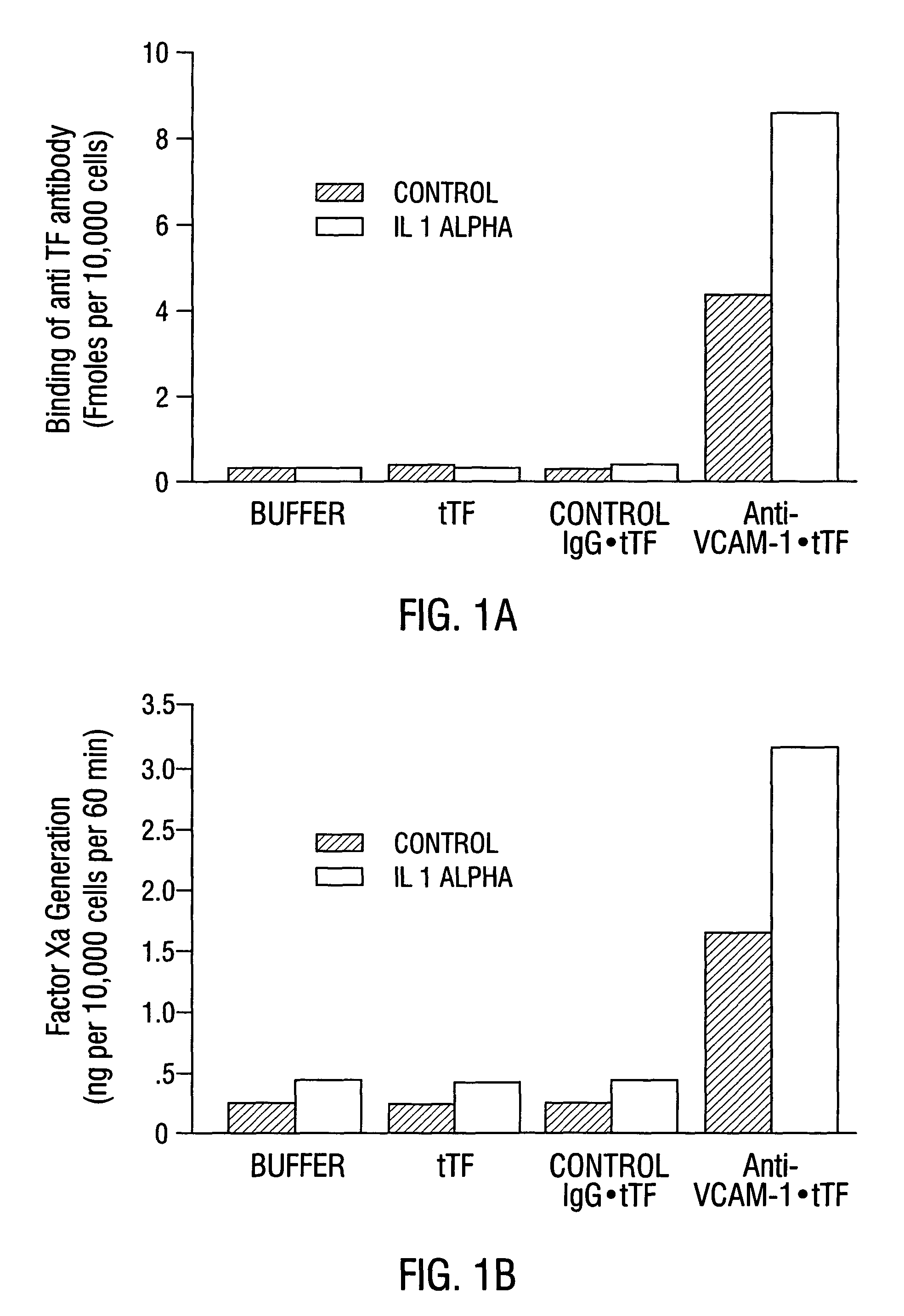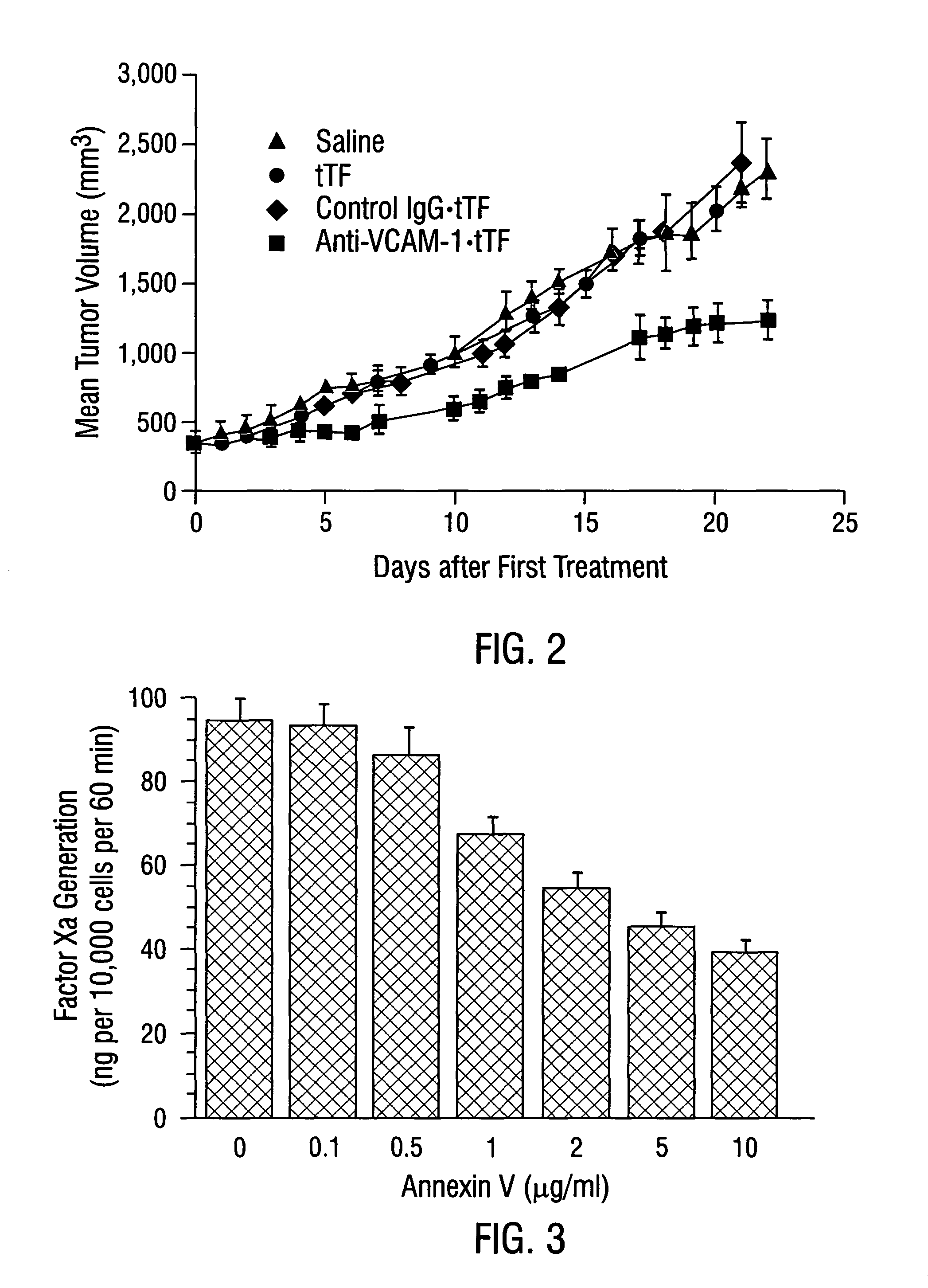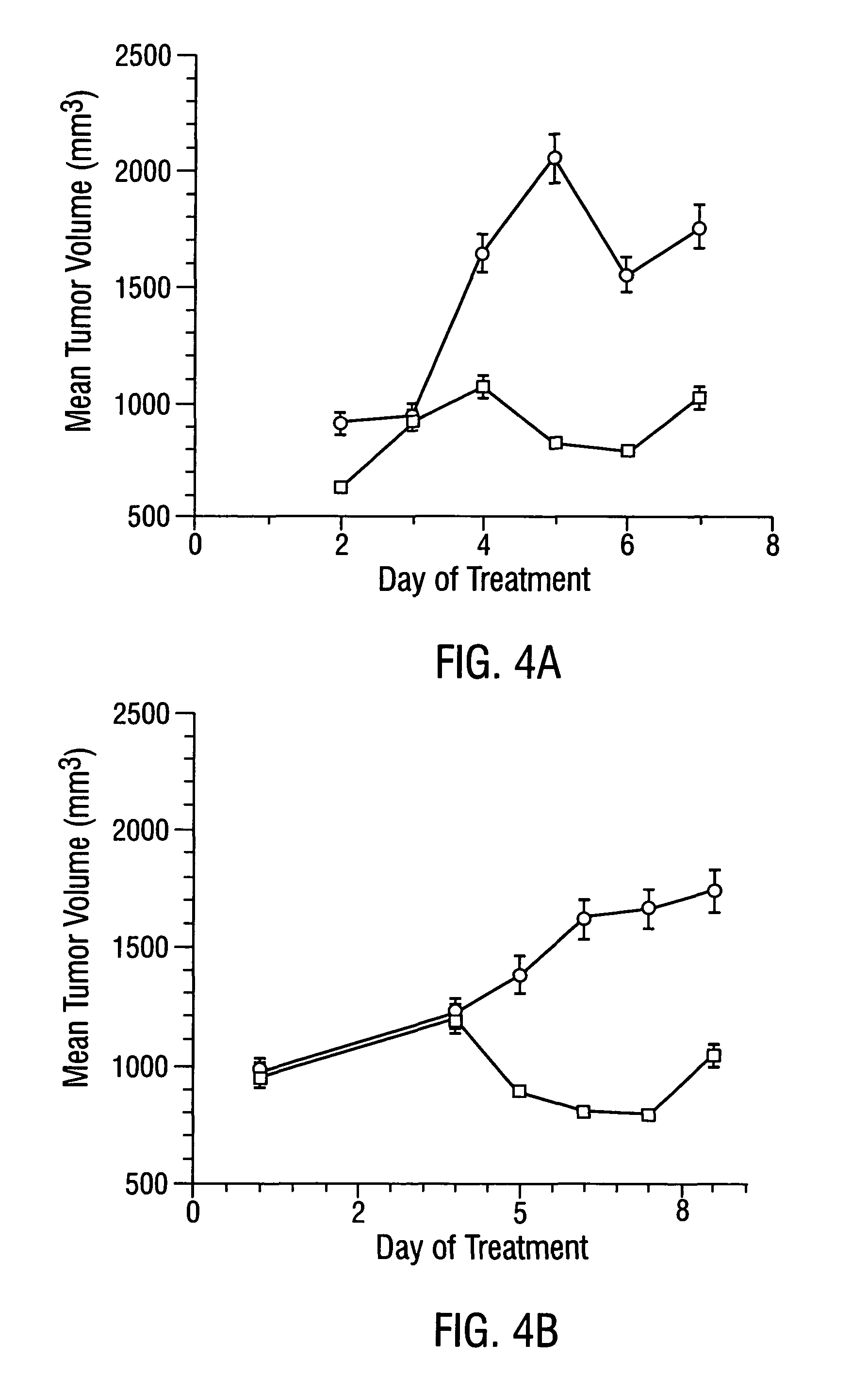Cancer treatment kits using antibodies to aminophospholipids
a technology of aminophospholipids and cancer treatment kits, which is applied in the field of blood vessels and tumor biology, can solve the problems of difficult for most chemotherapeutic agents to reach all, the desire for a “total cell kill” is significant, and the tumor cell resistance to chemotherapeutic agents is a significant problem
- Summary
- Abstract
- Description
- Claims
- Application Information
AI Technical Summary
Benefits of technology
Problems solved by technology
Method used
Image
Examples
example i
VCAM-1 Expression on Tumor and Normal Blood Vessels
A. Materials and Methods
1. Materials
[0522]Na125I was obtained from Amersham (Arlington Heights, Ill.). Dulbecco's modified Eagle's tissue culture medium (DMEM) and Dulbecco PBS containing Ca2+ and Mg2+ were obtained from Gibco (Grand Island, N.Y.). Fetal calf serum was obtained from Hyclone (Logan, Utah). O-phenylenediamine, hydrogen peroxide, 3-aminopropyltriethoxy-silane and sterile, endotoxin-free saline (0.9% NaCl in 100 ml of water) were from Sigma (St. Louis, Mo.). SMPT was from Pierce (Rockford, Ill.). Proplex T containing factor VII (74 IU / ml), factor X and factor IX (17 IU / ml) was purchased from Baxter Diagnostics Inc. (McGraw Park, Ill.). Chromogenic substrate, S-2765, for measuring factor Xa proteolytic activity was obtained from Chromogenix (Franklin, Ohio). Purified factor Xa was purchased from American Diagnostica (Greenwich, Conn.). 96 and 48 flat bottom microtiter plates were obtained from Falcon (Becton Dickinson an...
example ii
Localization of Anti-VCAM-1 Antibody in Vivo
A. Methods
[0534]Male CB17 SCID mice (Charles River, Wilmington, Mass.) weighing approximately 25 g were injected with 1×107 L540 Hodgkin's lymphoma cells subcutaneously into the right flank. Tumors were allowed to grow to a size of 0.4-0.7 cm3.
[0535]Mice were injected intravenously with 30 μg / 25 g body weight of anti-VCAM-1 antibody, R187 antibody or corresponding coaguligands in 200 μl of saline. Two hours later, animals were anesthetized with metafane and their blood circulation was perfused with heparinized saline as described (Burrows et al., 1992; incorporated herein by reference). The tumor and major organs were removed and snap-frozen in liquid nitrogen.
[0536]Cryostat sections of the tissues were cut and were stained immunohistochemically for the presence of rat IgG or TF. Rat IgG was detected using rabbit anti-rat IgG conjugated to HRP followed by development with carbazole (Fries et al., 1993). Coaguligand was detected using the 1...
example iii
Preparation of Anti-VCAM-1•tTF Coaguligand
[0539]An anti-VCAM-1•tTF conjugate or “coaguligand” was prepared as follows. Truncated tissue factor (tTF), with an additional added cysteine introduced at N-terminus (U.S. application Ser. No. 08 / 482,369, incorporated herein by reference), was expressed in E. coli and purified as described by Stone et al. (1995, incorporated herein by reference). After purification, the sulfhydryl group of N′ cysteine-tTF was protected by reaction with Ellman's reagent. The tTF derivative was stored in small volumes at −70° C.
[0540]To prepare the anti-VCAM-1 coaguligand, 5 ml of anti-VCAM-1 antibody IgG (2 mg / ml) in PBS were mixed with 36 μl of SMPT (10 mM) dissolved in dry DMF and incubated at room temperature for 1 h. The mixture was filtered through a column of Sephadex G25 equilibrated in PBS containing 1 mM EDTA. The fractions containing the SMPT-derivatized antibody were concentrated to 4 ml by ultrafiltration in an Amicon cell equipped with a 10,000 ...
PUM
| Property | Measurement | Unit |
|---|---|---|
| concentrations | aaaaa | aaaaa |
| volume | aaaaa | aaaaa |
| diameter | aaaaa | aaaaa |
Abstract
Description
Claims
Application Information
 Login to View More
Login to View More - R&D
- Intellectual Property
- Life Sciences
- Materials
- Tech Scout
- Unparalleled Data Quality
- Higher Quality Content
- 60% Fewer Hallucinations
Browse by: Latest US Patents, China's latest patents, Technical Efficacy Thesaurus, Application Domain, Technology Topic, Popular Technical Reports.
© 2025 PatSnap. All rights reserved.Legal|Privacy policy|Modern Slavery Act Transparency Statement|Sitemap|About US| Contact US: help@patsnap.com



